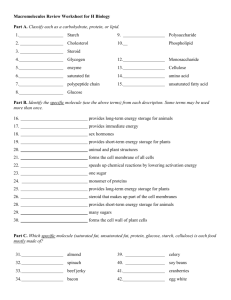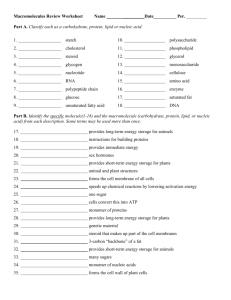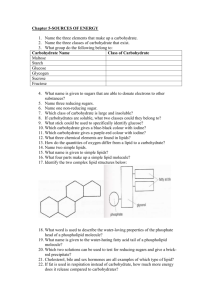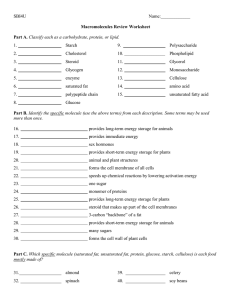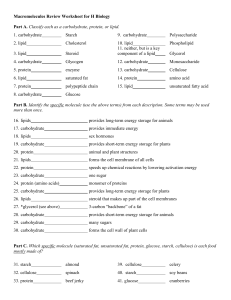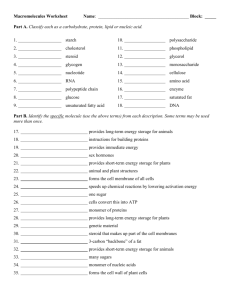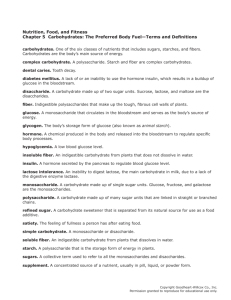Macromolecules Worksheet #2
advertisement
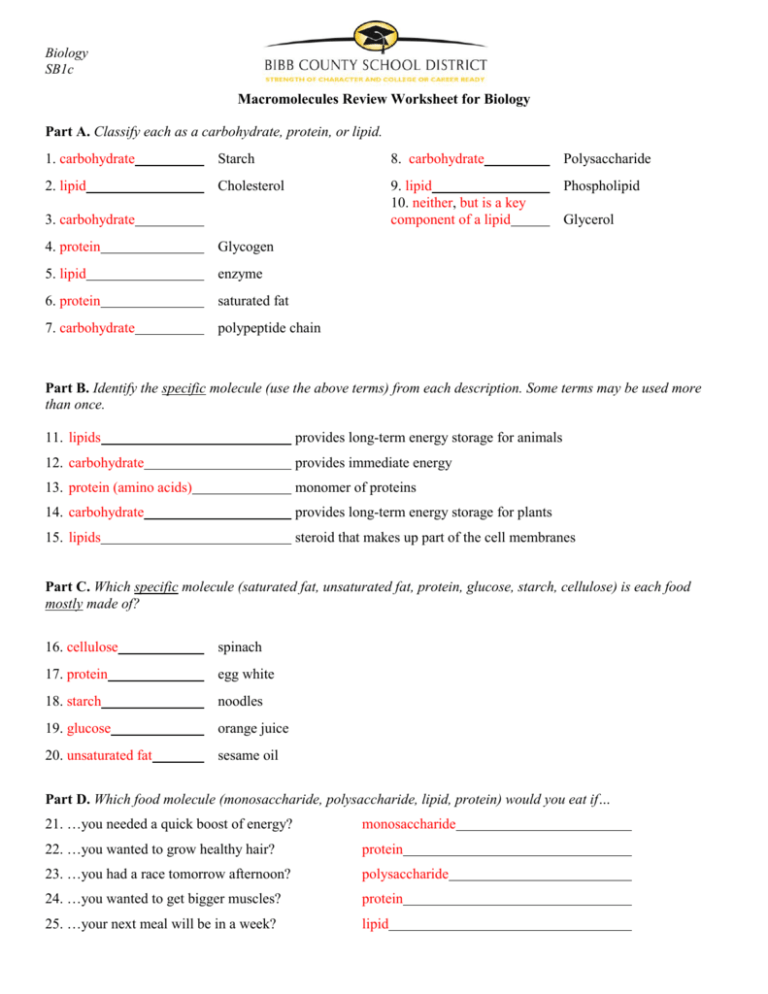
Biology SB1c Macromolecules Review Worksheet for Biology Part A. Classify each as a carbohydrate, protein, or lipid. 1. carbohydrate Starch 8. carbohydrate Polysaccharide 2. lipid Cholesterol 9. lipid 10. neither, but is a key component of a lipid Phospholipid 3. carbohydrate 4. protein Glycogen 5. lipid enzyme 6. protein saturated fat 7. carbohydrate polypeptide chain Glycerol Part B. Identify the specific molecule (use the above terms) from each description. Some terms may be used more than once. 11. lipids provides long-term energy storage for animals 12. carbohydrate provides immediate energy 13. protein (amino acids) monomer of proteins 14. carbohydrate provides long-term energy storage for plants 15. lipids steroid that makes up part of the cell membranes Part C. Which specific molecule (saturated fat, unsaturated fat, protein, glucose, starch, cellulose) is each food mostly made of? 16. cellulose spinach 17. protein egg white 18. starch noodles 19. glucose orange juice 20. unsaturated fat sesame oil Part D. Which food molecule (monosaccharide, polysaccharide, lipid, protein) would you eat if… 21. …you needed a quick boost of energy? monosaccharide 22. …you wanted to grow healthy hair? protein 23. …you had a race tomorrow afternoon? polysaccharide 24. …you wanted to get bigger muscles? protein 25. …your next meal will be in a week? lipid Biology SB1c Part E. Short Answer questions 1. What is the relationship between glucose, fructose, and galactose? They are isomers of one another – They have the same chemical formula but differ in how those elements are bonded to each other within the molecule. 2. What are the structural differences between a saturated and an unsaturated fat? Unsaturated fats have a double bond between at least two carbons in the fatty acid tail and those same carbons have only a single hydrogen bonded to each. 3. Explain how polymers are related to monomers. Polymers are comprised of monomers.
